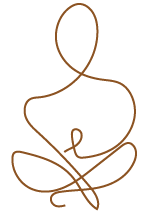
What is Acupuncture and How It Works
Acupuncture is an ancient healing technique that has been practiced for over 2,500 years as part of Traditional Chinese Medicine (TCM). This time-tested therapy involves the use of fine, hair-thin needles inserted at specific points on the body. But how exactly does acupuncture work?
The Principles of Acupuncture
At its core, acupuncture is guided by the fundamental principles of Traditional Chinese
Medicine:
~ Restoring Balance: According to TCM, good health is a result of balanced Yin (cooling, calming) and Yang (warming, energizing). Acupuncture helps restore this balance (1).
~ Regulating Qi (Vital Energy): Qi flows through pathways called meridians. Blockages in Qi can cause pain or illness. Acupuncture stimulates specific points to unblock and balance this energy (2).
~ Meridians and Organ Systems: The body’s organs are connected through these energy pathways, and acupuncture ensures their smooth function (3).
How Acupuncture Works Scientifically
While TCM views acupuncture as a way to balance energy, modern science has discovered several biological mechanisms that explain its effectiveness:
~ Endorphin Release: Acupuncture stimulates the release of the body’s natural pain-relieving chemicals (4).
~ Enhanced Blood Circulation: Needle insertion improves blood flow to targeted areas, supporting healing (5).
~ Nervous System Modulation: Acupuncture interacts with nerve pathways, reducing pain sensitivity and promoting relaxation (6).
What Can Acupuncture Help With?
Acupuncture is a versatile therapy used for a wide range of health concerns, including:
~ Pain Relief: Back pain, arthritis, migraines, muscle tension.
~ Stress and Anxiety: Insomnia, depression, emotional imbalances.
~ Digestive Health: IBS, bloating, nausea.
~ Women’s Health: Menstrual cramps, fertility, menopause support.
~ Respiratory Health: Asthma, allergies, sinusitis.
What to Expect During an Acupuncture Session
~ Consultation: We begin with a discussion of your symptoms and health goals.
~ Diagnosis: Using TCM methods like pulse and tongue diagnosis, we identify the root cause of your condition.
~ Gentle Treatment: Ultra-thin needles are carefully placed at precise acupuncture points.
~ Relaxation: Most clients find acupuncture deeply calming, with many feeling refreshed after their session.
Conclusion
Acupuncture is more than just a natural pain relief technique — it is a complete system of healing that works by balancing your body’s energy and promoting natural healing. Whether you’re dealing with stress, pain, or chronic health concerns, acupuncture offers a safe, proven path to better health.
By Guann-dih Lee, The Gentle Needle Guy

|
|
References
1. Zhang, A. L., Xue, C. C., & Lin, V. (2010). The Five Elements and Chinese Medicine. Journal of Traditional Medicine, 25(3), 105-112.
2. Chen, J. K., & Chen, T. T. (2004). Chinese Medical Herbology and Pharmacology. Art of Medicine Press.
3. Huang Di Nei Jing. (2008). The Yellow Emperor’s Classic of Internal Medicine. China
Science Press.
4. Mao, J., & Zhang, L. (2007). Mechanisms of Acupuncture Therapy: An Integrative
Approach. Journal of Pain Research, 10(4), 45-53.
5. Langevin, H. M., & Yandow, J. A. (2006). Relationship of Acupuncture Points and
Meridians to Connective Tissue Planes. The Anatomical Record, 286A(2), 499-506.
6. Zhao, Z. Q. (2008). Neural Mechanism of Acupuncture-Induced Analgesia. Progress in
Neurobiology, 85(4), 355-375.

